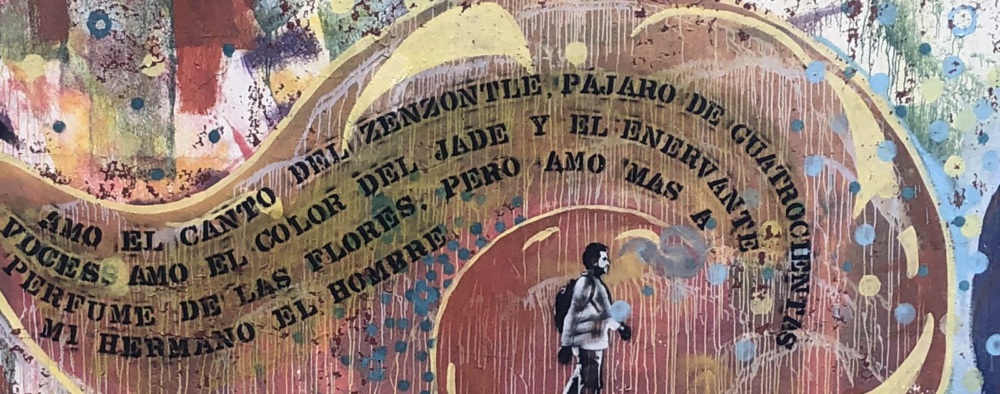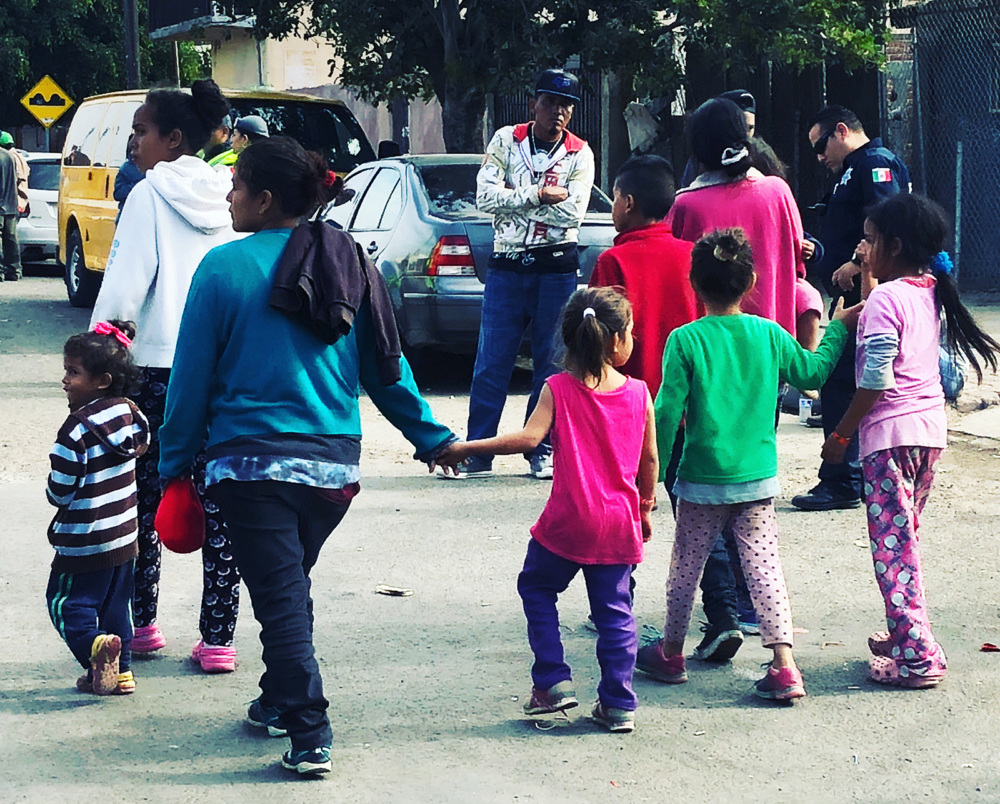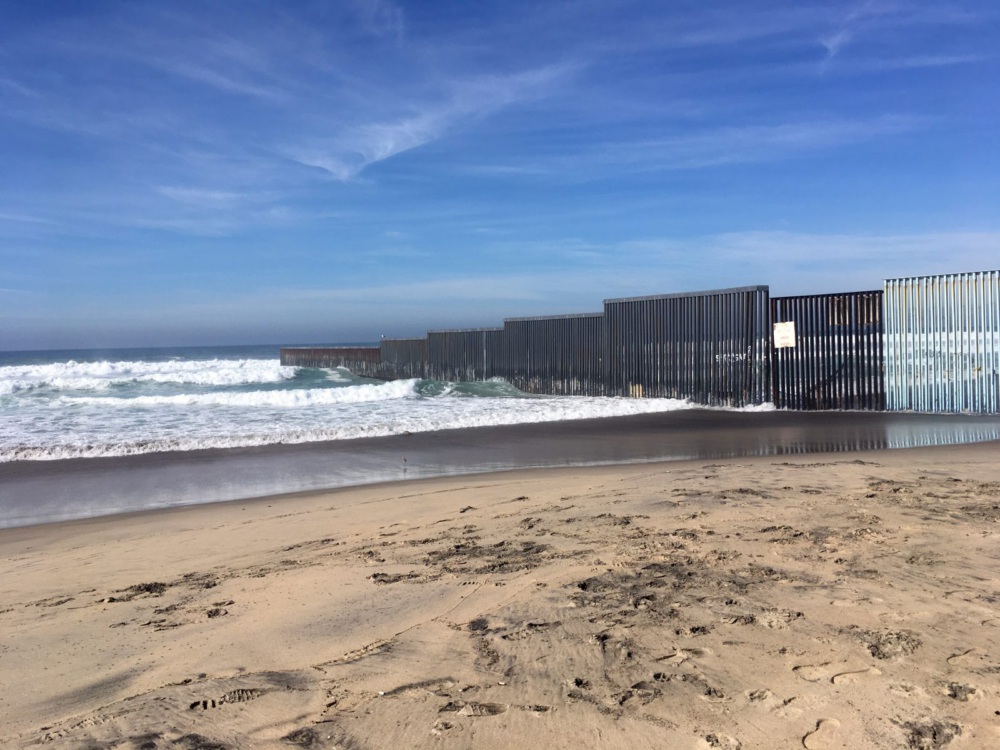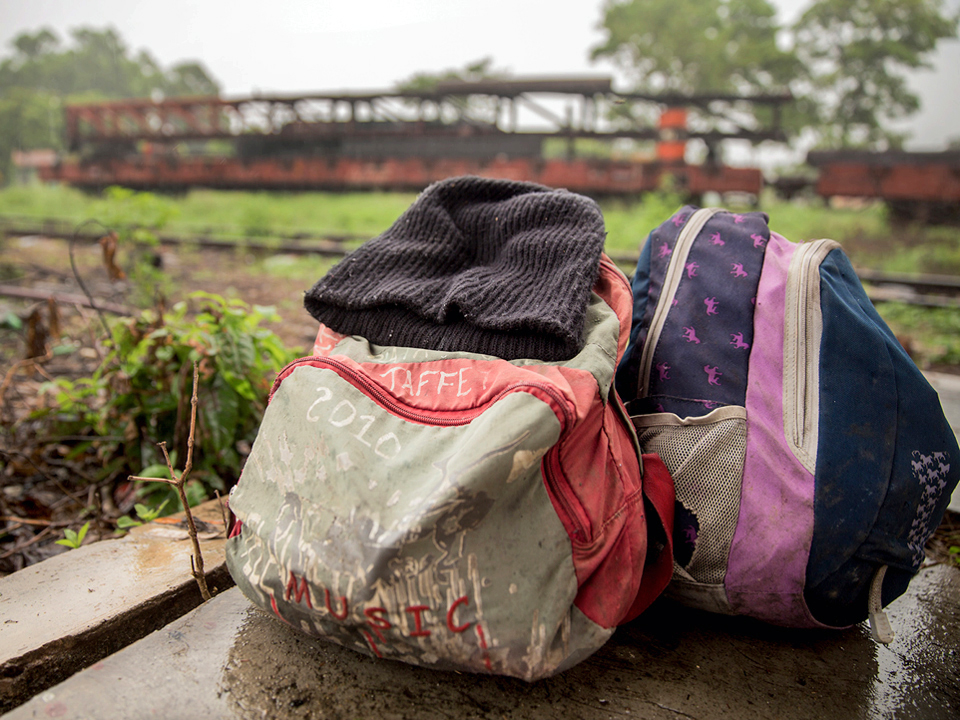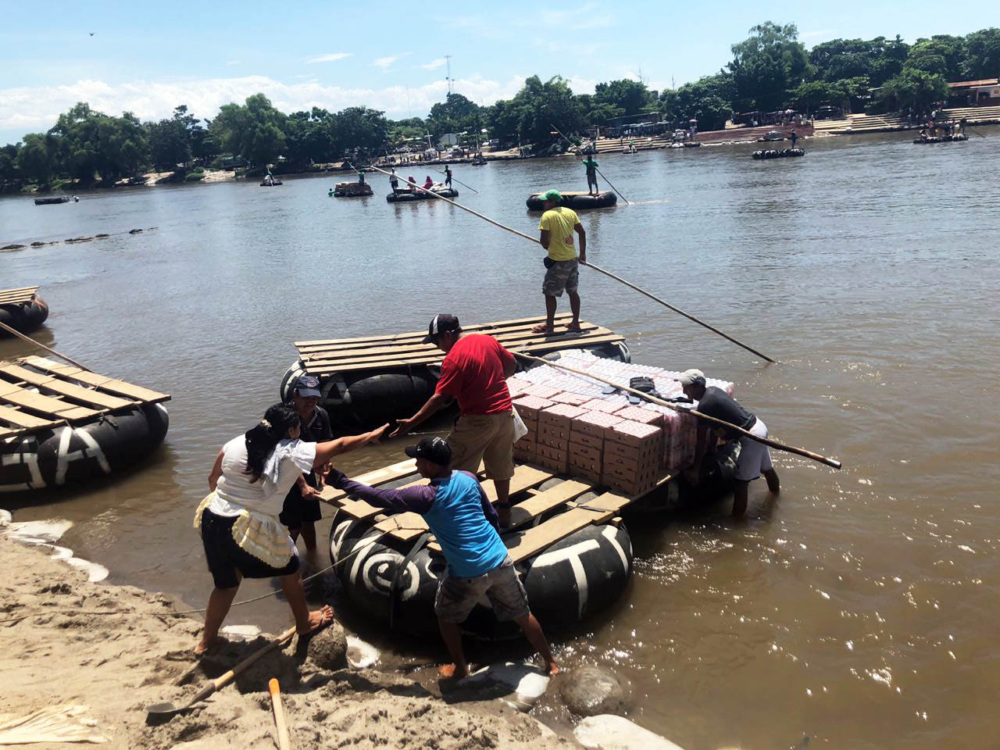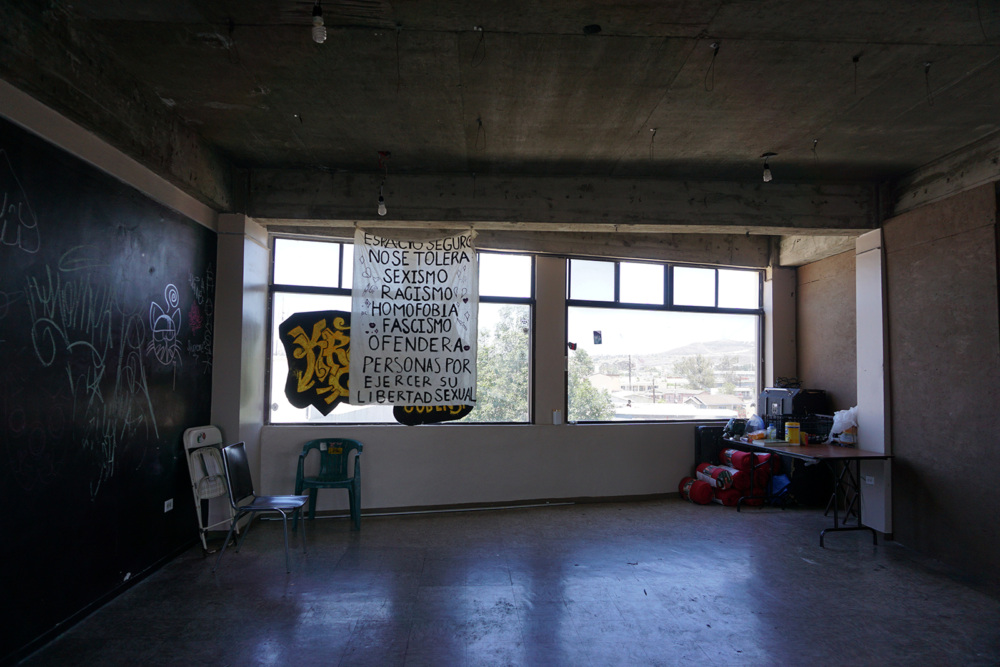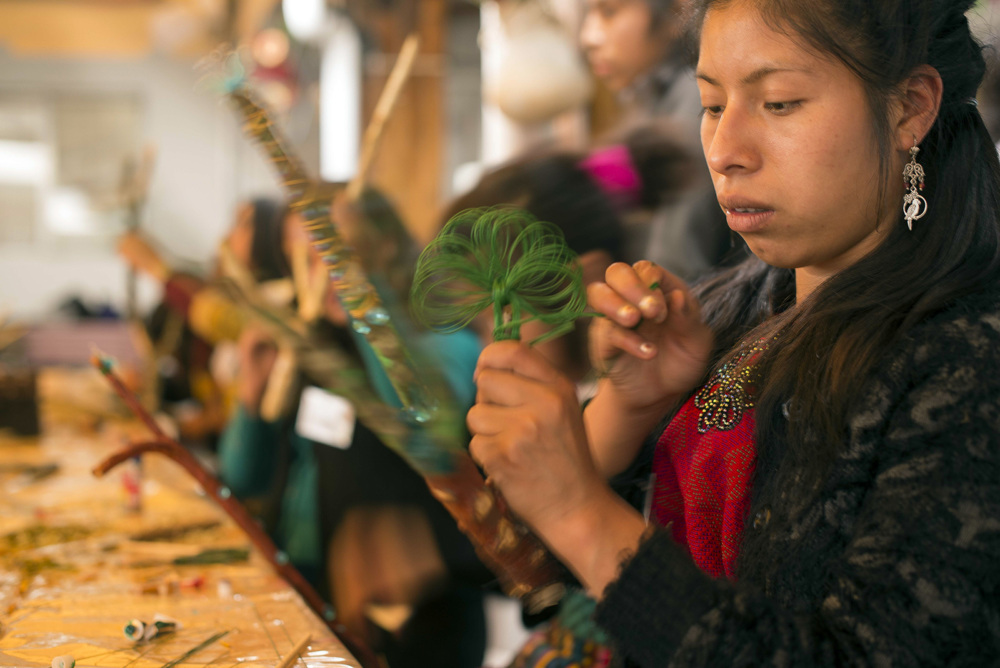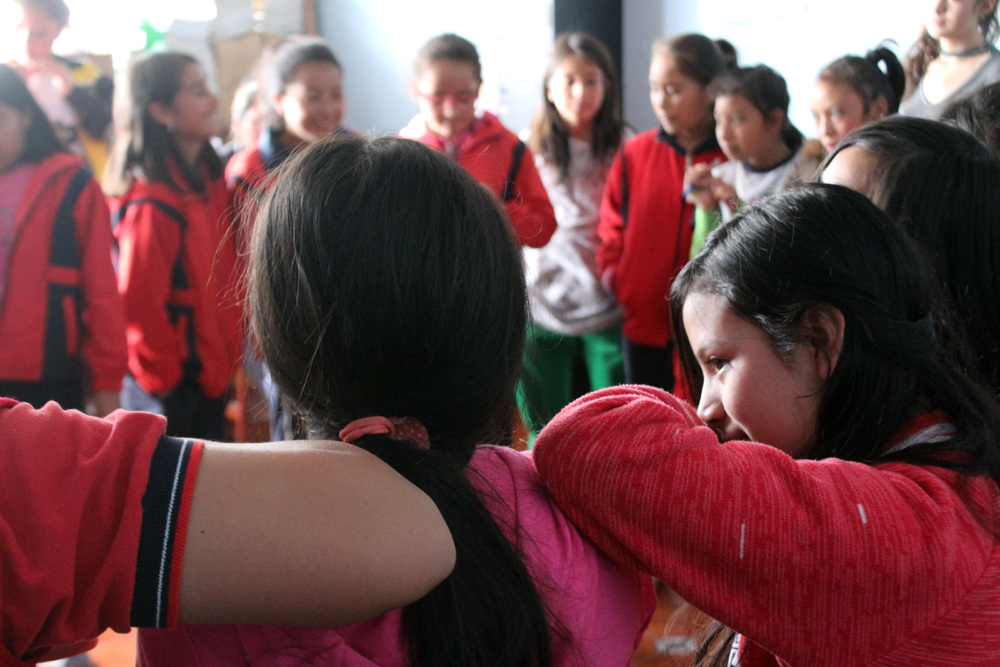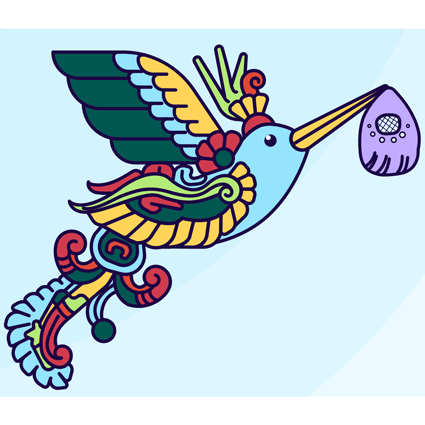
Justiça de gênero
Justiça de gênero, Segurança e bem-estar, Poder da juventude
No ano passado, os padrões migratórios e a demografia mudaram significativamente ao longo do corredor da América Central, México e EUA. Como uma nova tendência migratória altamente visível na região, as caravanas expuseram o contexto violento da jornada dos migrantes – desde seu desespero para fugir de seus países de origem até as violações de direitos humanos que eles encontram em trânsito e depois que chegam a seus destinos.
Nesta edição especial, o Global Fund for Children fornece uma visão geral das caravanas e examina mudanças recentes na demografia migratória, como a crescente onda de mulheres, famílias e crianças em movimento. Também destacamos as necessidades e ações das meninas migrantes e, especificamente, como nossos parceiros locais na América Central, México e EUA estão respondendo a essa crise humanitária em desenvolvimento.
Clique nos links abaixo para pular para diferentes tópicos dentro do relatório.
Leia uma introdução à nossa iniciativa transnacional para proteger a segurança e os direitos de meninas adolescentes migrantes.
Saiba por que os migrantes estão se deslocando em caravanas, quem está envolvido e como seus movimentos estão impactando políticas e atitudes na região.
Analise os insights da nossa rede de organizações da sociedade civil (OSCs) – quais serviços diretos a rede fornece, como estamos construindo impacto coletivo e como estamos fortalecendo a agência de meninas migrantes.
Saiba como estamos ajudando nossos parceiros a desenvolver suas capacidades e enfrentar novos desafios e oportunidades.
Os colaboradores deste relatório incluem Rodrigo Barraza, Marco Antonio Blanco, Elise Derstine e Vanessa Stevens.
O Projeto Adolescentes e Migração, uma parceria entre o Fundação NoVo e o Fundo Global para Crianças, e com apoio adicional da Fundação Harold Simmons, apoia um grupo de 11 organizações da sociedade civil que estão comprometidas, cada uma à sua maneira, em proteger a segurança e os direitos de meninas migrantes adolescentes na América Central, México e Estados Unidos. O projeto de três anos também se concentra em aumentar a conscientização pública sobre os desafios e a vulnerabilidade aumentada que essas meninas enfrentam ao longo dos estágios de sua jornada.
Com base no caminho da migração, esses parceiros locais fornecem serviços para meninas migrantes que viajam para o norte, meninas que foram detidas e/ou meninas que escolhem permanecer no México. O projeto também inclui parceiros com base nos Estados Unidos que ajudam meninas migrantes que chegaram recentemente, foram detidas ou estão se adaptando a uma nova vida nos Estados Unidos.
Nesta seção, analisamos por que os migrantes estão se deslocando em caravanas, quem está envolvido e como seus movimentos estão impactando as atitudes e a política na região.
Durante décadas, os fluxos migratórios da América Central foram resultado de uma variedade de fatores de atração e repulsão, como conflitos civis, pobreza, marginalização social, falta de acesso à educação e serviços de saúde, reunificação familiar, corrupção, remessas e escassez de oportunidades econômicas.
A frase “em busca de uma vida melhor” é frequentemente usada para se referir a esses fatores, todos os quais de fato continuam sendo críticos para os migrantes, mas mudanças recentes sugerem que as pessoas estão fugindo não em busca de uma vida melhor, mas para sobreviver.
Hoje, mais mulheres, crianças desacompanhadas e famílias estão arriscando a perigosa rota de 3.000 milhas. Em 2018, a agência de Alfândega e Proteção de Fronteiras dos EUA relatou um aumento de unidades familiares e crianças desacompanhadas cruzando a fronteira, compreendendo aproximadamente 47% das apreensões ao longo da fronteira sudoeste dos EUA. Aproximadamente 163.000 familiares foram detidos no ano passado – mais de três vezes mais do que em 2017, e o maior número registado desde 2012. Em Yuma, Arizona, onde os migrantes eram antigamente compostos maioritariamente por trabalhadores agrícolas e operários, quase 90% dos que atravessam a fronteira são famílias, muitos dos quais buscam asilo para fugir da violência em seus países de origem.
Essas mudanças demográficas refletem a realidade violenta na América Central, particularmente devido à crescente incursão de gangues internacionais conhecidas como “maras” e cartéis de drogas. Esses grupos violentos afligem comunidades com maiores taxas de tráfico de pessoas, prostituição, tráfico de drogas, extorsão, assassinato e lavagem de dinheiro. De acordo com dados do Escritório das Nações Unidas sobre Drogas e Crime, El Salvador tem a maior taxa de homicídios do mundo (com 82,8 assassinatos por 10.000 pessoas), Honduras o segundo maior (com 56,5) e Guatemala o décimo (com 27,3).
As “maras” também estão ligadas, mas não são as únicas responsáveis, pela crescente taxa de feminicídio na região. América Latina abriga sete dos dez países com maior taxa de homicídios de mulheres, de acordo com um estudo de 2015. El Salvador, Colômbia e Guatemala lideram a lista: El Salvador tem uma taxa de 8,9 homicídios por 100.000 mulheres, Colômbia uma taxa de 6,3 e Guatemala 6,2.
Viajar sozinha pela América Central, México e Estados Unidos leva a um aumento da vulnerabilidade, dos riscos e da violência sexual e de gênero (VSG). Isso é particularmente verdadeiro para mulheres, crianças e migrantes LGBTQ.
De acordo com um estudo de 2017 realizado por Crianças que precisam de defesa e Centro de Direitos Humanos Fray Matías de Córdova, crianças em trânsito correm maior risco para assédio sexual, estupro, tráfico humano e sexo forçado para sobrevivência; os mais vulneráveis são meninas e crianças e jovens LGBTQ. Os perpetradores da violência SGBV incluem grupos criminosos organizados, contrabandistas e traficantes, funcionários da imigração, autoridades e outros migrantes.
A violência é um risco que mulheres e crianças enfrentam em casa, assim como em sua jornada. No mesmo estudo KIND, 70% de participantes do sexo feminino que sofreram VSG em seus países de origem relataram que foi um fator decisivo para a migração. Vítimas de VSG que são repatriadas sofrem formas contínuas, muitas vezes piores, de agressão, estupro e VSG.
Em resposta à violência em suas comunidades de origem e para se protegerem em trânsito, os migrantes buscam segurança em números. Só em outubro, uma caravana saindo de San Pedro Sula, Honduras, foi estima-se que existam entre 3.000 e 5.000 migrantes viajando juntos.
As caravanas também fornecem maior visibilidade para os migrantes e sua situação, permitindo que eles sejam vistos não apenas como vítimas, mas como defensores capazes de aumentar a conscientização sobre a violência que sofrem. Os migrantes têm sido historicamente relutantes em falar com figuras de autoridade em defesa de seus direitos, por medo de prisão ou detenção. Alguns hesitam em confiar em grupos de defesa por medo de que a exposição também possa levar à detenção.
Isso continua sendo verdade hoje, mas ao viajarem juntos, os migrantes estão melhor posicionados para questionar e denunciar autoridades de imigração e políticas injustas implementadas na região, seja na Guatemala, no México ou nos EUA. Sua maior visibilidade como um grupo torna mais fácil para grupos de advocacy, OSCs e organizações não governamentais (ONGs) reunirem informações sobre suas experiências e tomarem medidas diretas para lidar com injustiças e necessidades.
Infelizmente, a mobilidade coletiva dos migrantes também provocou uma reação pública e, de muitas maneiras, fortaleceu atitudes xenófobas e discriminatórias. Muitas figuras políticas e comentaristas retrataram a caravana como uma tática de invasão, onde supostos criminosos e terroristas poderiam cooptar a caravana em uma manobra semelhante à do Cavalo de Troia. Essa resposta expôs ainda mais a crescente estigmatização e criminalização em relação aos migrantes centro-americanos e mexicanos e seus defensores e apoiadores.
Em outubro de 2018, para cooperar com a administração dos EUA, o governo mexicano fechou temporariamente sua fronteira com a Guatemala, o que resultou em protestos violentos e violações de direitos civis que provocaram uma onda de críticas globais.
Nos EUA, a atual administração tem consistentemente defendido políticas de migração regressivas e linha-dura, como o aumento da patrulha de fronteira e da vigilância do Immigration and Customs Enforcement (ICE), e a reversão dos direitos de refugiados e asilo. A política de “tolerância zero” da administração, por exemplo, levou à separação forçada de mais de 2.400 famílias na fronteira dos EUA; separação familiar continuou mesmo depois que a política foi revogada no verão de 2018.
O governo dos EUA também anunciou que O status de proteção temporária está sujeito a expirar para quase 400.000 imigrantes até o início de 2020, que inclui moradores salvadorenhos e hondurenhos que vivem nos EUA há quase uma década. A Human Rights Watch relata níveis elevados de insegurança para não cidadãos e apátridas, que têm sido detidos com mais frequência pelas autoridades de imigração, incluindo crianças e mulheres grávidas, nos centros de detenção em rápido crescimento. Por fim, os tribunais continuam a debater a legalidade da decisão de encerrar o programa Deferred Action for Childhood Arrivals (DACA) em 2017, deixando o destino de 800.000 jovens imigrantes incerto.
No início de 2019, a segurança da fronteira foi a questão definidora por trás de uma paralisação de 35 dias do governo dos EUA, a mais longa da história. No momento em que este relatório foi escrito, o presidente Donald Trump declarou emergência nacional para construir um muro ao longo da fronteira entre o México e os EUA.
Em resposta a essa crise humanitária, a GFC e seus parceiros agiram rapidamente para atender às necessidades das caravanas de migrantes da América Central. A chegada de comboios de milhares de migrantes apresenta desafios distintos para nossos parceiros, que fornecem uma ampla gama de serviços e programas, e que também devem preparar os migrantes para navegar pelos processos burocráticos e legais nos portos de entrada das fronteiras. Nesta seção, analisamos que tipo de suporte eles estão fornecendo, como estão colaborando uns com os outros e como trabalham para atender às necessidades das meninas migrantes.
Estrategicamente localizados na fronteira entre Guatemala e México e na fronteira entre México e EUA, os parceiros do GFC forneceram diretamente a mais de 400 meninas e meninos ajuda humanitária muito necessária, informações de segurança, aconselhamento jurídico, aconselhamento sobre procedimentos de imigração, apoio psicossocial e treinamento em advocacy e empoderamento juvenil de junho a dezembro de 2018.
A ajuda humanitária consistiu em grande parte no fornecimento de serviços básicos e suprimentos para migrantes, incluindo abrigo, comida e água, suprimentos de higiene e serviços médicos. Alguns parceiros do GFC notaram a necessidade de integrar ainda mais os programas de assistência humanitária em seu trabalho com crianças e adolescentes migrantes. Localizado na Guatemala, nosso parceiro Jovens por El Cambio tomou medidas concretas ao lançar uma campanha bem-sucedida de arrecadação de fundos para oferecer mais ajuda humanitária aos migrantes.
Nossos parceiros locais também desempenham um papel nos esforços de defesa dos migrantes e repassam informações a grupos importantes, como jornalistas, canais de mídia, centros de direitos humanos e clínicas jurídicas.
No México, os parceiros da GFC se uniram para relatar e denunciar abusos de direitos humanos. Centro de Direitos Humanos Fray Matías de Córdova e Vozes Mesoamericanas Ação com Pueblos Migrantes, juntamente com várias outras organizações no México e na Guatemala, lançaram uma iniciativa conjunta chamada “Brigada Humanitária”. Essa nova iniciativa de geração de informações permite que os parceiros monitorem abusos de direitos humanos e intensifiquem incidentes com migrantes, o grupo de parceiros e veículos de notícias.
De forma semelhante, Sem Fronteiras uniu-se a autoridades locais, organizações internacionais, OSCs e ONGs, juntamente com a Comisión de Derechos Humanos del Distrito Federal (Comissão de Direitos Humanos da Cidade do México), em um projeto chamado Puente Humanitario (Ponte Humanitária). Este projeto garante que os migrantes da caravana tenham acesso a serviços de saúde, alimentação e conhecimento sobre procedimentos migratórios no México e nos EUA. Ao mesmo tempo, o projeto aumenta a conscientização sobre as necessidades específicas de crianças e jovens migrantes, promovendo intervenções focadas em gênero.
Antes do Projeto Meninas Adolescentes e Migração, muito do trabalho realizado por nossos parceiros foi limitado às suas comunidades imediatas. Nos últimos meses, o grupo de 11 parceiros se desenvolveu em uma rede transnacional de organizações de base, organizações da sociedade civil e centros de refúgio que, juntos, podem fornecer serviços mais robustos para jovens migrantes. Isso é melhor demonstrado quando os parceiros unem esforços em nível regional e internacional para oferecer serviços e benefícios complementares para migrantes em transição.
Após o sucesso do primeiro Reunião da GFC em agosto de 2018, vários parceiros se uniram para oferecer serviços mais eficientes e oportunos em resposta às caravanas de migrantes e estão expandindo seu trabalho e conhecimento pela região afetada, trabalhando em colaboração direta uns com os outros. Os parceiros do GFC compartilham ativamente suas experiências e aprendizados uns com os outros por meio de plataformas públicas abertas a outros agentes, instituições e defensores que trabalham para proteger os direitos dos migrantes na América Central, México e EUA.
Por exemplo, dado o aumento de migrantes de ascendência indígena da América Central, Al Otro Lado (na área de Tijuana/Los Angeles) colaborou com Frei Matías (em Chiapas, México) e Coletivo Vida Digna (na Guatemala) para traduzir seus materiais atuais do programa Conheça Seus Direitos para línguas indígenas, a fim de garantir que todos os migrantes possam acessar informações importantes para proteger seus direitos na busca de asilo e no enfrentamento de possíveis detenções e separações familiares.
Vida Digna e Al Otro Lado também estão colaborando através das fronteiras para ajudar os migrantes a preparar a documentação necessária para solicitar o status de refugiado e asilo nos Estados Unidos. Quando possível, esse processo legal é iniciado por Vida Digna na Guatemala e seguido por Al Otro Lado em Tijuana. Ambas as organizações também trabalham para garantir um retorno digno e baseado em direitos para os deportados.
Geralmente vemos os homens como os atores centrais nos fluxos migratórios, com as mulheres aparecendo na periferia. A grande mídia sobre a América Central e a imigração mexicana geralmente se concentra em homens migrantes, com grande parte dessa cobertura visando difamar ou selecionar histórias para fazer generalizações enganosas. As histórias de mulheres e meninas migrantes não são contadas, incluindo as horrendas violações de SGBV que ocorrem no trânsito de suas casas para os países anfitriões.
Na realidade, meninas e mulheres migrantes são sobreviventes da violência, agentes políticas e protagonistas na complexa dinâmica migratória desta região desafiadora e em constante mudança.
Um dos principais objetivos do Projeto Meninas Adolescentes e Migração é tornar visível a violência sofrida por meninas e mulheres migrantes todos os dias, ao mesmo tempo em que as capacita para se tornarem agentes e defensoras com acesso a novas estratégias de intervenção, organização coletiva e resistência.
Durante 2018, ajudamos nossos parceiros a desenvolver e fortalecer iniciativas centradas em meninas e lideradas por meninas em toda a região. Passo a passo, meninas migrantes estão começando a assumir um papel de liderança nos processos de tomada de decisão das organizações, ações e intervenções comunitárias e estratégias de advocacy e comunicação.
Em 2018, mais de 1.500 meninas e adolescentes migrantes se beneficiaram diretamente das atividades e programas dos nossos parceiros. Aqui estão exemplos de iniciativas específicas que fortalecem a agência de meninas e jovens migrantes:
À medida que a segurança da fronteira continua a ser manchete, a determinação dos nossos parceiros em promover e proteger os direitos dos jovens migrantes permanece inabalável. Na GFC, estamos planejando vários eventos e atividades para apoiá-los em 2019:
